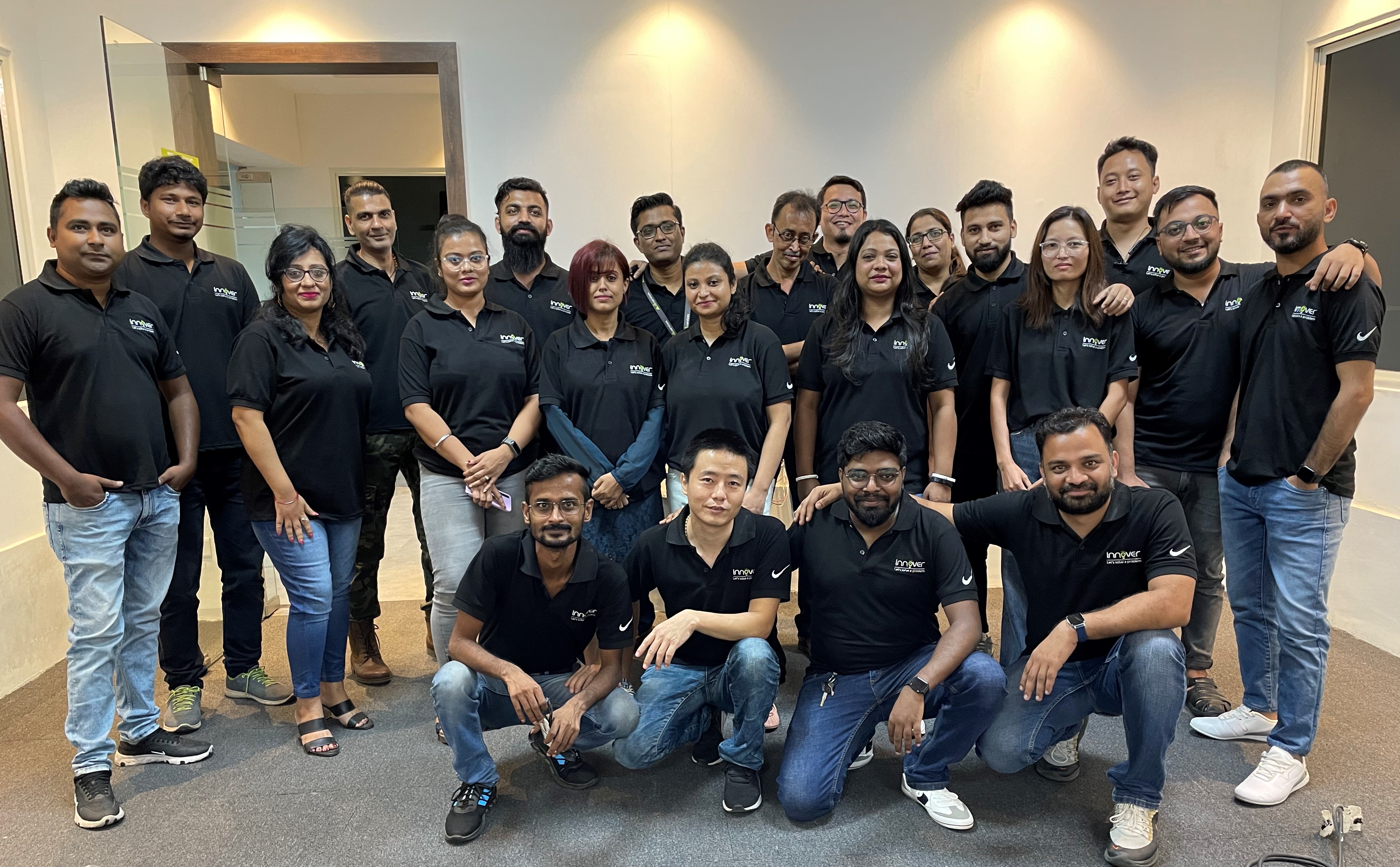Upgrade and Optimize the Standard Reverse Logistics Practice Powered by a Connected Insight-Driven Approach
By Amit Gautam, Innover Digital
The return logistics (RL) challenge seems to be growing by the year. It surprisingly accounted for a 56% increase1 from $428 billion in 2020 to $761 billion in 2021. Businesses need to act fast to curb this loss by embracing a connected, insight-driven approach by replacing legacy standards that are siloed and fragmented. Manufacturers, suppliers, and retailers need to map the best possible inverse journey for a returned product to address the 5R’s, returns, reselling, repairs, repackaging, and recycling. As a cost-intensive effort that is costing as much as 10% of the total sales value2 for businesses, it becomes imperative for them to design, develop and implement a connected insight-driven contemporary process to limit the damage.
CHALLENGES GALORE
Businesses across industries are faced with challenges brought about by product returns. Some products find their way back to the supplier, or manufacturer due to defects, repairs, or mismatches in expectations while in some cases such as the beverage industry the returns such as tap containers are part of recovering value and fostering sustainability. Similar is the case with the construction industry where reverse logistics moves and recycles salvaged materials to new sites helping companies go sustainable, reduce wastage, and save on costs.
As expressed above the challenge of reverse logistics is across industries and all-encompassing but as per data, the major chunk of products returned is by retail consumers majority of which is by eCommerce3 consumers. The trend is only expected to grow with eCommerce sales expected to touch $7.4 trillion by 20254.
There are many reasons why there is such an influx of returns from online buyers. The biggest reason for consumers returning a product is driven by preference. As many as 72%5 of online consumers (mostly fashion merchandise) return a product citing style, fit, and size while 10% return products citing not as prescribed or defective.
What is also encouraging this trend of returns is the eagerness of sellers to provide a superior customer experience, drive engagement, and encourage repeat sales besides recouping the value of shipped products. Statistics6 point out that businesses having a defined return policy are at an advantage as 67% of consumers check the return policy before purchasing an item. Whereas 92% will purchase again if the return process is seamless and easy.
THE STANDARD PRACTICE OF REVERSE LOGISTICS
The burdening cost associated with the standard reverse logistics practice is also a stifling challenge for businesses. Supplychain24/77 points out that reverse logistics cost has shot up by 75% in the last four years and is expected to stay on the climb.
The journey of a product back from the customer is exhaustive and goes through a string of processes making it cost and resource-intensive. The process integrates multiple stakeholders each responsible for a specific task starting from planning, scheduling and dispatch, product inspections, and refurbishing. Each of these processes is burdened by individual complexities that compound to pose bigger challenges.
The biggest challenge businesses face in this milieu is the non-synchronized functioning of the entire reverse logistics practice. Be it complexities with return order flows that circle around a set of processes including but not limited to verification, inspection, and testing of the product. The absence of a Return Merchandise Authorization Management System to drive transparency at every transaction point or evolving customer demands such as the trend of bracketing a tendency to buy multiple variables of a product to return some of them later.
Overcoming these growing challenges requires a single view solution that can keep all parties involved informed about every event in the return journey of a product.

CONNECTING THE DOTS ACROSS REVERSE LOGISTICS CHAIN
The current reverse logistics practices are disjointed efforts without a single view tracking system that backtracks a product’s journey from the customer to the warehouse or identified destination.
A swift return policy backed by resources to ensure that the product reaches the identified destination is essential to safeguard the value of the product. The longer the products are in transit the more it loses value and adds to costs. Getting products back into the mainstream for sale is the best solution for maximum recovery.
One way to ensure that the goods returned are swiftly processed for optimal gains would be to knit together four vital elements in the return logistics process.
Cutting edge user-friendly technology - a technology-driven integrated system for customers to seamlessly raise return requests across platforms and devices. A system that can notify the best possible return journey for a product, be it dropping it at a partner store or an AI-driven assistant to guide the customer to mend a product in case of electronics or appliances. Technology-driven robust systems can guide customers on utilizing the best return course bringing agility to the return process whilst improving customer experience.
Streamlined, segregated operations and infrastructure - the standard practice of most organizations is to use the operational and infrastructural capabilities of forward logistics to serve the need of RL. While this enables cost savings the operations happening in close proximity can get intermingled and pose challenges. A defined operation and infrastructure facility can greatly optimize savings and optimization from the growing reverse logistics challenge.
Digitally primed transportation – a definitive network mapping out the best available destination for the parcels taking size, distance, and other parameters can greatly optimize costs related to the transportation of products. Partnerships like the one between Amazon and Kohl’s are strategic efforts to keep the transportation costs in check. Kohl’s has partnered with Amazon8 to accept, screen, and send back Amazon returns in a single shipment.
Add verified, structured data to the mix - the huge spike in products being returned by the customer needs to be investigated to understand the primary triggers that are driving these actions besides understanding the sectors and locations from where these products are getting returned. Data analytics is pivotal to understanding customers and the reasons behind returns. Data also is essential for designing return policies and strategies as it can be leveraged to capture every touchpoint in the returns lifecycle to complement supplier agreements and understand the total cost of ownership.
Towards a contemporary connected, and insight-driven RL practice
The problem of returns has been an age-old problem that has grown in size over the years. The climb is going to continue buoyed by rapid digitization, growing digital transactions, and evolving customer demands. The challenge that has evolved over time needs a solution that transforms existing standard practices to embrace a contemporary, connected, insight-driven approach that is in tune with the demands of modern business.
Connected - Optimizing and upgrading the standard reverse logistics practice is the need of the hour to safeguard business interests that are getting bogged down by the growing burden of costs. One way to do that is to ensure visibility and control over the extensive global operation encompassing the entire return journey of a product to drive real-time transparency and the ability to manage exceptions, like frauds, delays, or lost in transit instances.
Businesses should invest in control towers9 that not just cover the forward logistics but also integrate reverse logistics. A digitally connected control tower provides a holistic solution that provides total coverage over the entire supply chain, including every reverse logistics B2B and B2C event. It also processes any new events when the business grows and evolves. Organizations should embrace a control tower that leverages advanced technologies, such as artificial intelligence and machine learning to help break down silos, reduce or eliminate manual processes and get real-time actionable insights.
Insight-driven - the control tower is built on the idea of capturing and using data to provide enhanced real-time visibility and in-depth analysis. It is a source of continuous intelligence capturing data continuously and in real-time powering organizations to become proactive instead of reactive backed by predictive and prescriptive analytics. A data-based understanding of the interrelationships that matter across the reverse supply chain, including inventories, workforce, customers, installed base, as well as the processes that drive their flows and performance, empowers organizations to optimally utilize available resources. It also enables organizations to understand the impact of their efforts, simulate scenarios, and prompts smart responses.
Insights enable companies to govern and monitor flow and gain unparalleled contextual insight into how their different processes and flows affect one another. It gives access to greater optimization opportunities through order splitting and consolidation. Advanced analytics empower users with an insight-driven single view of all potential milestones in a flow – such as manufacturing, repair, and transportation, in addition to inventory across all locations (with suppliers, distributors, forward stocking locations, and items in transit), they can drive real-time coordination to use the most optimal and cost-effective movements throughout the entire supply chain. IKEA10 a globally renowned conglomerate uses automated analytics and AI to ensure that the big and expensive merchandise returned by their buyers is not wasted. It has designed a predictive AI tool that provides data-backed suggestions for the best possible subsidiary location for returned merchandise. The data-driven AI tool helps product managers at IKEA confidently decide whether a product should be called back to their showrooms, sold to a third-party retailer, or, donated to charity.

Focused and skilled Innover team powering a connected insight-driven reverse logistics practice
REAPING THE BENEFITS OF AN INSIGHT-DRIVEN CONTEMPORARY RL PRACTICE:
- Reduction in rate of returns
- A quicker turnaround in resolving issues around returns such as repairs and replacement
- Increased sustainability compliance with appropriate disposal or reclamation
- Greater recapture of revenue by assessing the real value of items returned

EMBRACING A CONNECTED INSIGHT-DRIVEN RL PRACTICE
A connected insight-driven reverse logistics chain allows for informed decision-making providing an understanding of each return’s unique issues. It gives organizations an opportunity to thoroughly review and understand if the return is justified and the best resolution for the same. A connected insight-driven reverse logistics process is critical to maintaining healthy inventory and optimizing costs. It also helps in the understanding of the various factors that lead to product returns essential to understanding purchase behavior and improving the overall experience.
The world is only just emerging from the uncertainties of a global pandemic that saw a significant increase in online commerce. With wars and pandemics becoming a part of everyday news and digital becoming the medium of choice for purchases, the chances of product returns are significant as people will not get to try or test products physically. A connected insight-driven reverse logistics practice makes you resilient and future-ready to face such eventuality.
Upgrade and optimize the standard reverse logistics practice powered by a connected insight-driven approach to become resilient and future-ready.
SOURCES
1 Cost of retail items returned in the United States from 2007 to 2021 – Statista.com
2 A $260 billion ‘ticking time bomb’: The costly business of retail returns – CNBC.com
3 E-commerce Product Return Rate – Statistics and Trends – Invespcro.com
4 Retail e-commerce sales worldwide from 2014 to 2025 – Statista.com
5 The Plague of Ecommerce Return Rates and How to Maintain Profitability- Shopify.com
6 E-commerce Product Return Rate – Statistics and Trends – Invespcro.com
7 6 Critical Challenges in Returns Management & Reverse Logistics that Unlocks Incredible Potential – SupplyChain247.com
8 Kohl’s goes all-in on Amazon returns – RetailWire.com
9 What is a Supply Chain Control Tower? – Gartner.com
10 IKEA Retail U.S. partners with Optoro to reduce waste from returns – IKEA.com
 Amit Gautam
Amit GautamIn his role as Chief Executive Officer and Co-Founder for Innover, Amit Gautam has responsibility for all aspects of the company’s product & services strategy & execution, as well as its financial performance and growth.
Amit has a relentless focus on Growth and Innovation and holds a strong personal commitment towards “Outcome-Driven” Digital Transformation for businesses. Amit collaborates with the C-suite executives of Fortune 1000 companies and guides them to adopt a digital-first mindset, delivering bold transformations and exceptional experiences.
Prior to Innover, Amit worked with firms like GE and Cognizant in various leadership roles. Amit studied Data Science at Harvard and holds a Bachelor’s degree in Engineering from India.